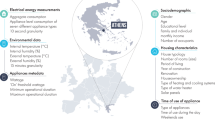Abstract
A highly automated calibration method for temperature loggers is presented. By using an automated procedure, a time- and cost-efficient calibration of temperature loggers is made possible. The method is directed at loggers that lack the function/property of direct reading from a display. This type of logger has to be connected to a computer for the setting-up of the measurement and again for collection of the measurement results. During the calibration, the loggers are offline. This method has been developed for temperature loggers from Gemini Data loggers, but the software and method could be modified to suit other types of loggers as well. Calibration is performed by comparison to a reference thermometer in liquid baths; and for loggers which have external sensors, only the sensor is normally placed in the bath. Loggers with internal sensors are protected from the liquid by placing them in an exterior plastic or metallic cover, and thereafter the entire loggers are placed in the bath. A digital thermometer measures the reference temperature of the bath and transmits it to a computer by way of Bluetooth. The developed calibration software, SPTempLogger, controls the logger software, and thus the communication protocol of the logger software does not need to be known. The previous method, with manual handling of the start and termination of every measuring sequence, evaluation of the resulting data and its corresponding uncertainty components, can be replaced by this automated method. Both the logger and reference measurement data are automatically downloaded once the logger has been connected to a computer after the calibration, and the calibration software started. The data are then evaluated automatically, and by statistical analysis of the confidence coefficient and standard deviation, the temperature plateaus that the calibration includes are identified. If a number of control parameters comply with the requirements, then the correction, resolution, and short-term stability are calculated for each calibration temperature. The calculated values are saved in a database, along with information about the instruments used during the calibration, after which calibration certificates and measurement uncertainty calculations can be generated. Up to ten loggers can be connected at the same time and are then evaluated in sequence. The paper will show that the system can correctly analyze different types of measurement sequences and what measurement uncertainties are associated with this.
Similar content being viewed by others
References
Whiteman C.D., Hubbe J.M., Shaw W.J.: J. Atmos. Ocean. Technol. 17, 77 (2000)
Connolly J.J.: in Temperature: Its Measurement and Control in Science and Industry, vol. 6, part 2, ed. by J.F. Schooley, pp. 915–925. AIP, New York (1992)
Yang S.L., He J.T., Sheng C.X., Zhang Y., Qin C.W., Chen S.B.: Key Eng. Mater. 474-476, 428 (2011)
Wilhelm J., Pingoud A., Hahn M.: BioTechniques 34, 324 (2003)
EA Publication EA-4/02: Expression of the Uncertainty of Measurement in Calibration. European Co-operation for Accreditation, Paris (1999)
Author information
Authors and Affiliations
Corresponding author
Rights and permissions
About this article
Cite this article
Ljungblad, S., Josefson, L.E. & Holmsten, M. Method for Effective Calibration of Temperature Loggers with Automated Data Sampling and Evaluation. Int J Thermophys 32, 2495–2503 (2011). https://doi.org/10.1007/s10765-011-1042-7
Received:
Accepted:
Published:
Issue Date:
DOI: https://doi.org/10.1007/s10765-011-1042-7




